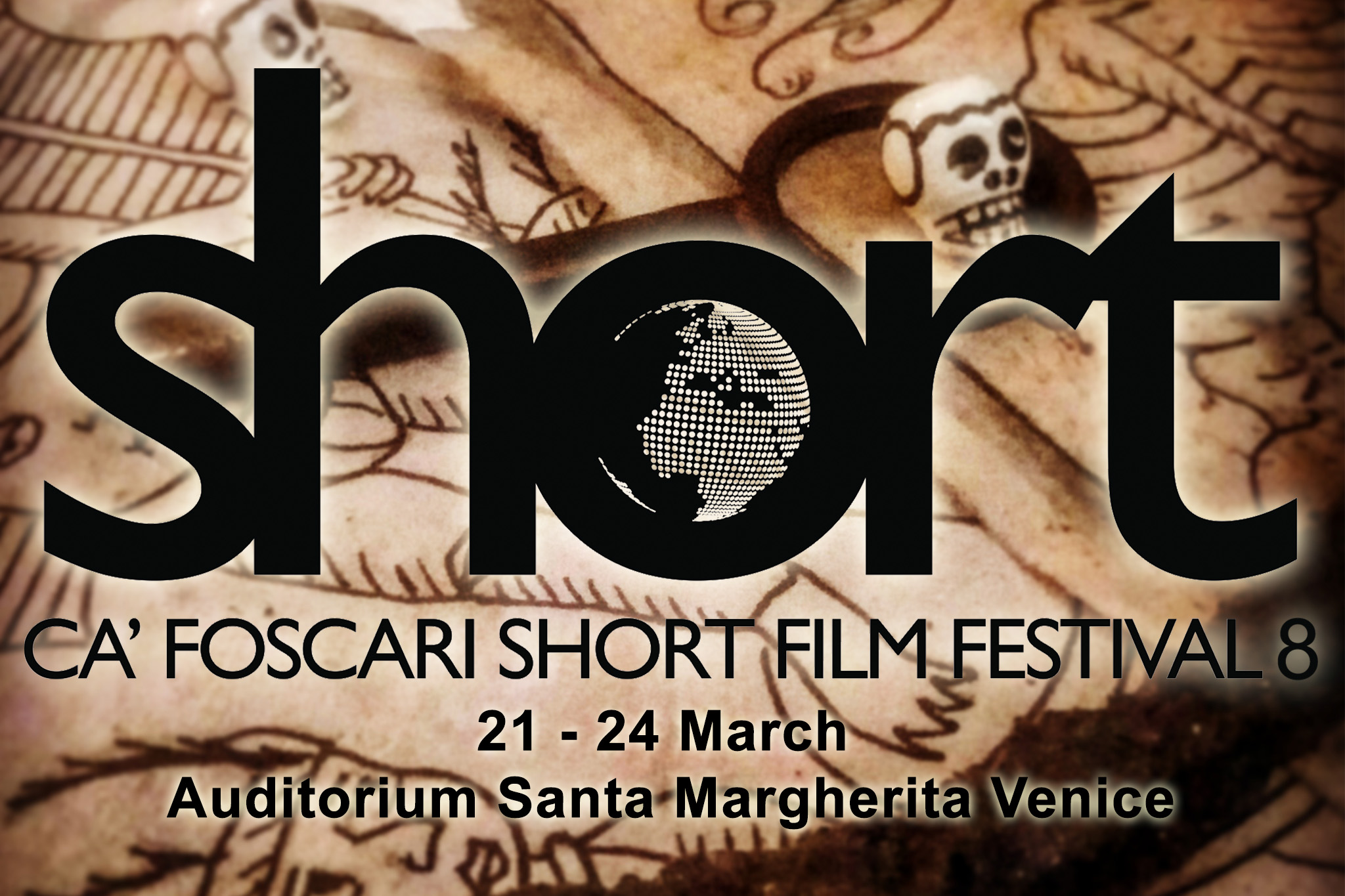
PETER GREENAWAY AND “NON-STANDARD” CINEMA:the master class of the British artist explores new routes for cinema
THE WHISPERED AND COLOURFUL POETRY OF GITANJALI RAO: the Indian animator shares her experience and admits:“I do not love Bollywood, but I’m into it. You can’t escape!”
Venice, March 23. The protagonist of the second day of Ca’ Foscari Short Film Festival is Peter Greenaway, the visionary and provocative film maker: he has a cardinal rule for the contemporary auteur cinema. A complete artist, Greenaway counts more than forty years of career in the world of cinema. Among his most important works, also mentioned by the Deputy Dean of Cultural Heritage, Flavio Gregori, who introduced the masterclass, we have works such as The Belly of an Architect (1987), Drowning by Numbers (awarded for Best Artistic Contribution at Cannes Film Festival in 1988), The Cook, the Thief, His Wife & Her Lover (1989) and Prospero’s Books (1991), all internationally appreciated.
In an Auditorium full of people, the filmmaker held his unmissable master class about the different languages that can be used in cinema, bringing a vision of syncretistic art to the audience. Indeed, Greenaway is not only a director, but also a painter: he refers to this art in his movies and installations, where each frame instils symbolical meanings. Greenaway started with an ironic and sharp digression on the actual cinematic situation, declaring that the Seventh Art is in a sort of in-between situation: “If you want to be cinematographic reviewers, your days are numbered… Maybe you have three years, more or less. The quality of actual cinema decreased and its language became poor.”
The British director sentenced that cinema, as we are used to know it, is at its check point: going to the cinema is not as common as it was twenty years ago; today’s individualistic tension pushes us to enjoy cinema on the small screen of its own home, depriving theatre of its appeal.
Movies, for Greenaway, should be composed for a 50 per cent by entertainment and the other 50 per cent by subjects; the challenge that the director has to face is to find the right balance between these two elements, so he can produce a high-quality artwork. For these reasons, he emphasises, the plot is not fundamental: “We often get out from the theatre without remembering the plot of the story”, and that cinema in a collection of stories to tell, moving pictures and music. Starting from these ideas, Greenaway has presented some of his video-installations, as the one produced for La Triennale International Exhibition in Milan: completely without a plot, it’s a juxtaposition of symbols of Italian culture and a reiteration of the same pictures, everything matched with a piece of music made by stringed instruments. Writing on Water, instead, juxtaposes pictures of an orchestra playing a background melody and others of the aquatic types, while superimposed roll notorious quotes from Shakespeare, Melville and Coleridge about water. Greenaway then talks about topics that thrill and fascinate the audience of the theatre: sex and death, topics on which he focused on in many of his artworks, showing the bond between Eros and Thanatos in some experimental and non-narrative works. Two of them were set in Italy, in Lucca and Venice. Greenaway concludes his master class with a series which about the atomic bomb and the explosions, matched with different languages on-screen texts about the number of explosions happened on the Earth, “To remind people the imminent destruction”. The director finished his master class showing his famous installation focused on The wedding at Cana by Paolo Veronese, before thanking the audience who returned his greetings with a long applause.
Another important guest during this second day is the Indian animator Gitanjali Rao, who, on the occasion of the special program dedicated to her, “The world of Gitanjali Rao”, curated by Cecilia Cossio, told her personal experience about the world of animation to the public in Auditorium Santa Margherita, starting from the beginning to the very latest projects she is working on.
“Animation allows me to preserve painting and to adapt it to the cinema”. According to Rao, the path towards the animation world begins from her very formation as a painter and her will to join the cinematographic environment while managing not to lose her artistic expressivity. A mix which can be actually obtained in the animation world, while the animator herself reveals she painted every frame of her short films manually, just not to lose her great passion. This is a technique that requires a lot of work and time, but that makes her works unique and puts them into the international spotlight. However, it wasn’t easy at all to be recognized globally. As she underlines during her interview on stage, her experience was basically built upon self-teaching, bumping against the current Indian animation block. As a matter of fact, Rao said her primary difficulty in being completely independent was related to a partial indifference on a national level regarding cinema promotion as the seventh art form. This is a reality where the animation is banished into a mere commercial box, governmental support lacks and results hardly come, crushed by the international competition.
The conversation goes on focusing on the relationship between the author and her home town, Mumbai, at the centre of some of her short movies. The role of Bollywood cinema is also underlined as a cinema the author relates to with odi et amo, a mixture of hate and love: “I don’t love Bollywood, but I’m into it. You can’t escape it![…] Mumbai without Bollywood would not be the same thing.”.
At the end of her program, Gitanjali Rao shares with the audience some information about her latest project – Bombay Rose – which will be out next year; it has been created also thanks to French contributions. The movie tells the love story between a Muslim boy and a Hindu girl. The artist then presents five short movies: True Love Story (2014), Chai (2013), Blue (2006), Orange (2006) and Printed Rainbow (2006), winner of the prize for the Best Short Movie at Cannes, which gave the audience the opportunity to admire the impressive panting and narrative abilities of the author. The shorts have also visually accompanied the viewer inside colourful worlds and throughout Mumbai streets, telling stories without the need of dialogue and mixing elements of European traditional cinema with the Indian culture, starting from dance and national traditional music. The screening ended with the author herself defined as “a series of moving paints, each one near another other one”, followed by the cheering and the excitement of the audience.

